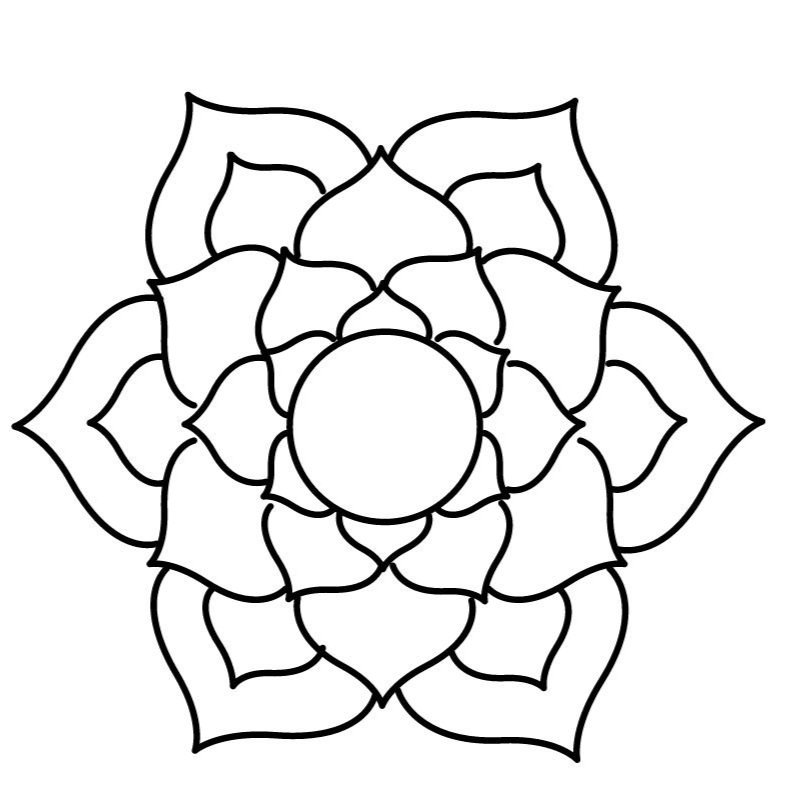Inner Critic
We all have it - the voice inside of us that never forgets to remind us of how everything bad that ever happened to you is always - and only - your own fault, or how other people just seem to have their relationships/careers/body all worked out, meanwhile you, on the other hand… And so it goes, on and on.
The voice has been called many things: most of us know it as our Inner Critic, the author Geneen Roth calls it The Crazy Aunt in the Attic, and my therapist refers to it as the Greek Chorus. We internalize the voice (or voices, in some case) during those infamous “formative years”, and it is usually an amalgamation of various authority and attachment figures from those times. My own inner critic is an elderly (“mature”) Catholic woman, who truly believes that she is the only relevant judge of what is right, and also pays an exorbitant amount of attention to what “other people will think”. And although she embodies some of my older female relatives and teachers, I always get sad when I think about that, because I believe that they - especially my family, had nothing but love and my best interests at heart. However, our young brains are so primed to picking up clues from our environment (and especially from those that are our primary sources of love and nurture) that we form ideas and concepts based on what we perceive to be going on, regardless of the sources’ intentions.
And that’s the best case scenario.
Many people have experienced abuse and trauma from those that they depended on for survival. Unfortunately, the only way a child can grasp what is happening is to interpret it as “there is something wrong with me, it is my fault”. And that gives birth to some of the harshest, cruelest Inner Critics that are really difficult to dismantle.
So what can we do about it?
Many of us spend a lot of time in therapy trying to recognize, identify, and name the Inner Critic, before we do anything else. Step 1, realizing that the Inner Critic is here, and that it is just another voice (or thought) in your head, and not “The Real Me” or the “One That Knows Right From Wrong” comes as a revelation (and a relief) to most of us.
Once we have an awareness of it, and are able to create some space between ourselves and the Critic, we can choose how we want to engage with it. There are many different tactics to try: we can try to ignore it and shut it up (mostly ends with the Critic shapeshifting and showing up in a different way), we can try to reason with it and kill it with arguments (unlikely to succeed, because the Critic loves to play dirty), or we can get curious about it.
Dr. Aziz Gazipura, who researches and writes about social anxiety and self-confidence, suggests that approaching the Inner Critic with empathy is the best way to learn what it is that he/she/they is trying to protect us from. Because in the end, that is what the Critic was created to do - to protect us from pain, shame, and heartbreak (it is just going about it the wrong way). So instead of fighting and/or suppressing, I can try asking myself what it is that the Critic is afraid will happen to me, and then realizing that I (not the Critic) is in charge, and capable of handling whatever comes my way.
Engaging with the Inner Critic is similar to working with a strong negative emotions, and requires a lot of patience, as well as the ability to distance and sit with the feelings. A great tool for practicing those skills of self-compassion is RAIN meditation (Recognize/Allow/Investigate/Non-identifying with the emotion). Next time you hear the Inner Critic emerging, you can pause and go through the steps: “Aah, that’s the Inner Critic” (recognizing), do not try to squash/run away from the experience (allow), ask yourself “Where in the body do I feel what the Critic is telling me?”, “How does it feel to be hearing this?”, “What is the Critic trying to save me from?” (Investigate), while acknowledging that You are separate from It (non-identifying).
In his clinical work with clients trying to overcome addictions, Dr. Jud Brewer discovered that curiosity is the best way to update the reward mechanism that is responsible for creating bad habits. In some ways, the Inner Critic can be thought of as a habitual, dysfunctional way of avoiding facing fear, or another challenging emotion. If we get curious about the Critic, and really investigate what lies behind that voice, our brain will find it rewarding and pleasurable, allowing us to renew some of our old, automatic responses to it.
In short, the best way to tame the critic is to embrace it, allow it to reveal its secrets, and then remind it that at the end, it is You who is the Boss.
